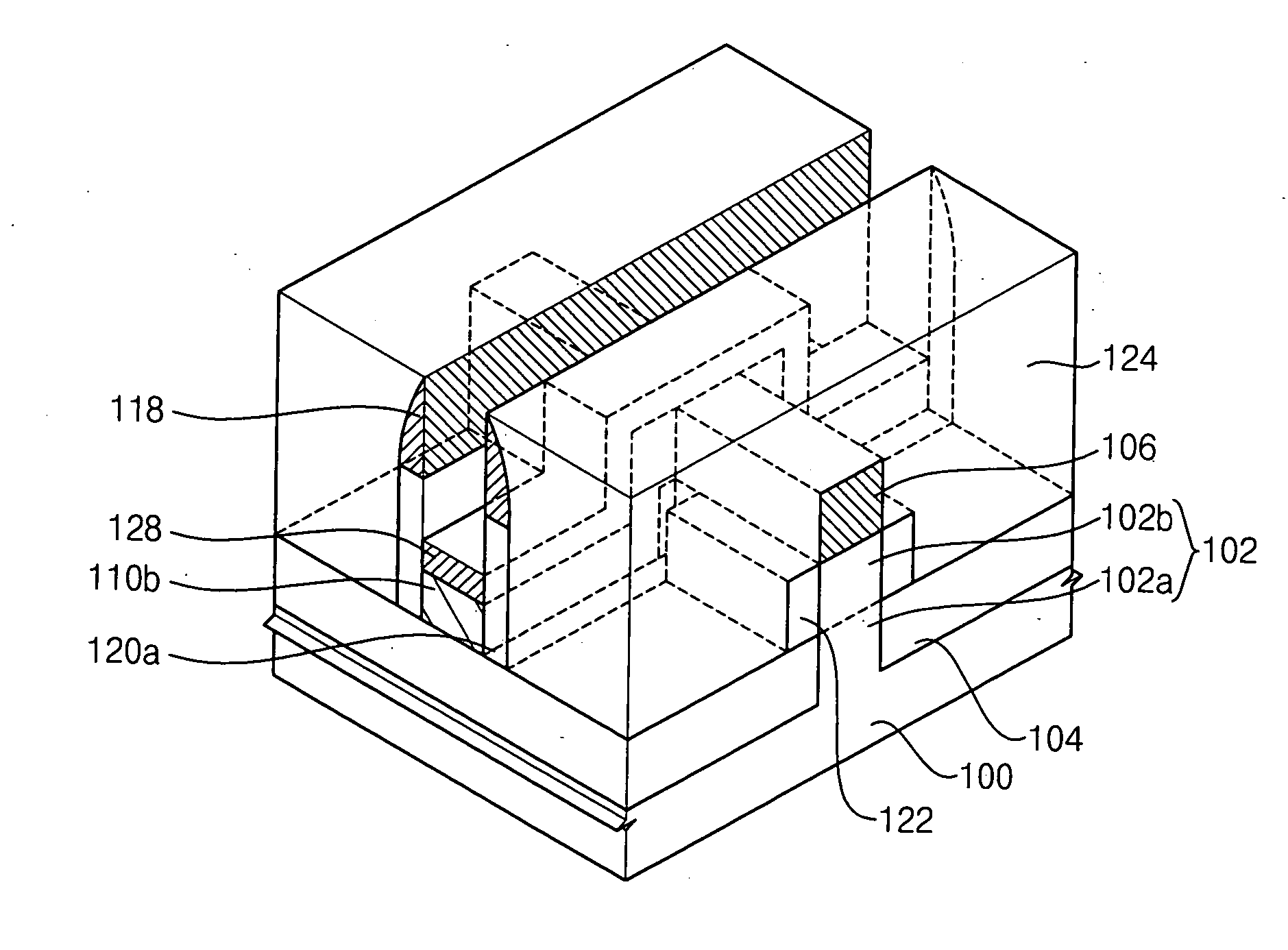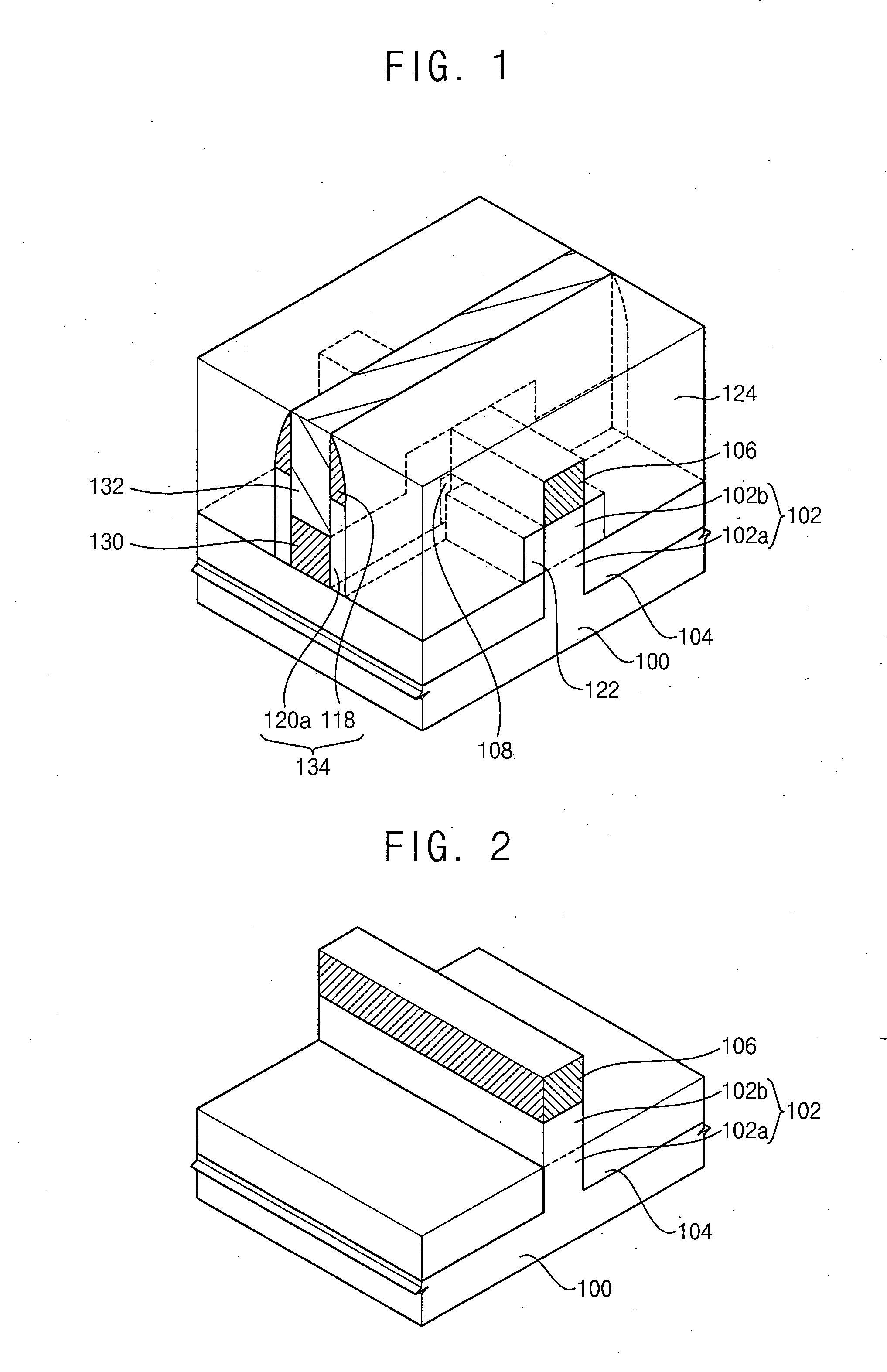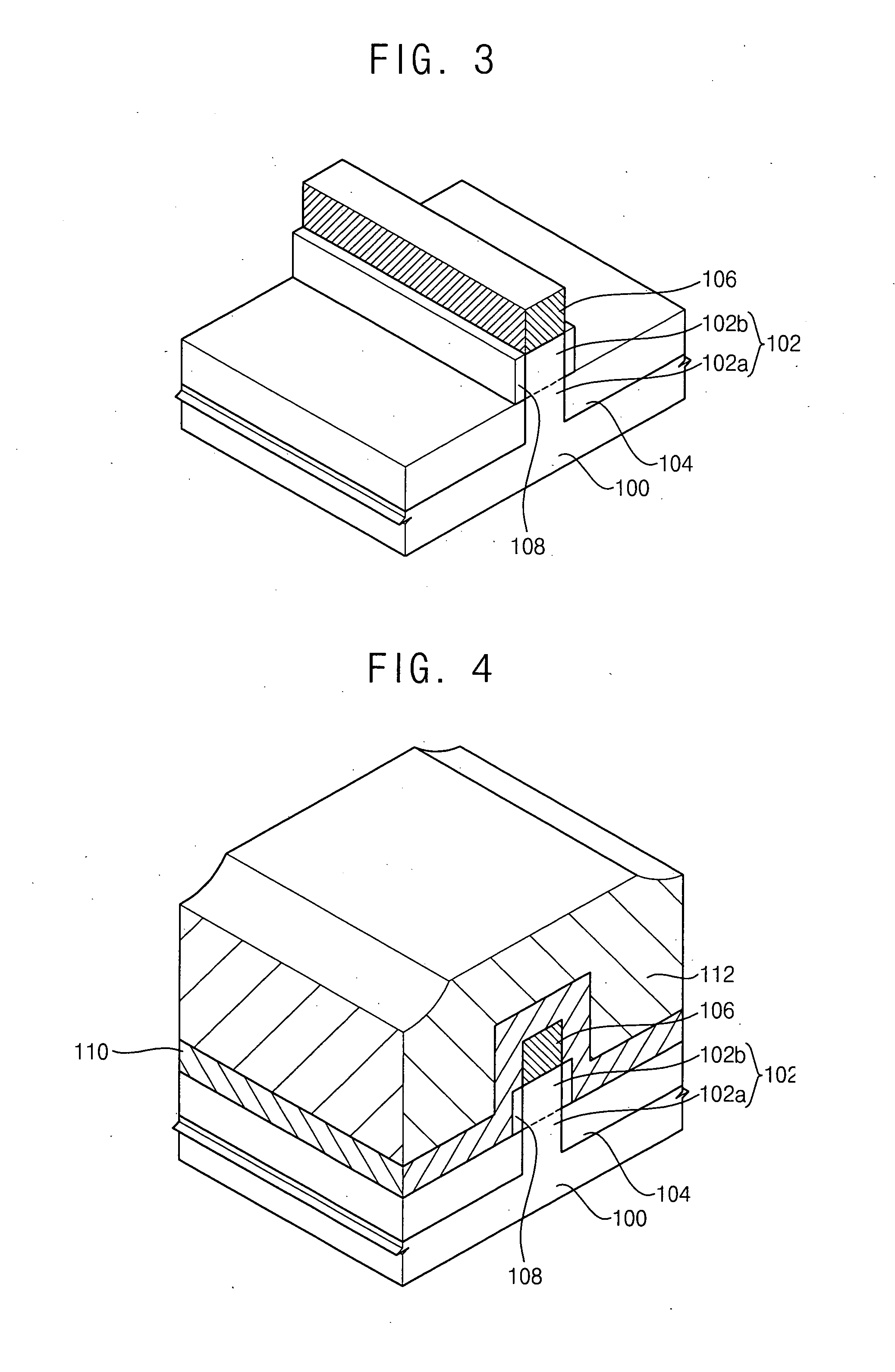Fin type field effect transistors and methods of manufacturing the same
- Summary
- Abstract
- Description
- Claims
- Application Information
AI Technical Summary
Benefits of technology
Problems solved by technology
Method used
Image
Examples
embodiment 1
[0024]FIG. 1 is a cross sectional view illustrating a fin type field effect transistor in accordance with a first embodiment of the present invention.
[0025] Referring to FIG. 1, an active fin 102 is formed on a surface of a semiconductor substrate 100 including silicon. The active fin 102 extends away from a major surface of the semiconductor substrate 100. The active fin 102 can be integrally formed with the semiconductor substrate 100, so that the active fin 102 can be formed from the same, or substantially the same, material as the semiconductor substrate 100. In some embodiments, the active fin 102 may have a width of no more than about 40 nm to allow control of a gate electrode formed on opposite sides of the active fin 102.
[0026] An isolation layer 104 is formed on the semiconductor substrate 100 to electrically isolate unit devices, which are formed on the active fin 102, from each other. The thickness of the isolation layer 104 is defined so that an upper portion of the ac...
embodiment 2
[0091]FIG. 15 is a cross sectional view illustrating a fin type field effect transistor in accordance with a second embodiment of the present invention.
[0092] The exemplary fin type field effect transistor includes elements substantially identical to those in Embodiment 1 except for an SOI substrate. Accordingly, the same reference numerals are used to refer to the same elements and any further illustration and explanation with respect to the same elements is omitted herein for brevity.
[0093] Referring to FIG. 15, an active fin 202 is formed on the SOI substrate 200 including a silicon layer 200a and a buried oxide layer 200b sequentially stacked. Thus, the active fin 202 is not electrically connected to the silicon layer 200a of the SOI substrate 200. The fin type field effect transistor is formed on the active fin 202 and the buried oxide layer 200b using, for example, the methods described below.
[0094]FIG. 16 is a cross sectional view illustrating methods of manufacturing the ...
PUM
 Login to View More
Login to View More Abstract
Description
Claims
Application Information
 Login to View More
Login to View More - R&D
- Intellectual Property
- Life Sciences
- Materials
- Tech Scout
- Unparalleled Data Quality
- Higher Quality Content
- 60% Fewer Hallucinations
Browse by: Latest US Patents, China's latest patents, Technical Efficacy Thesaurus, Application Domain, Technology Topic, Popular Technical Reports.
© 2025 PatSnap. All rights reserved.Legal|Privacy policy|Modern Slavery Act Transparency Statement|Sitemap|About US| Contact US: help@patsnap.com



